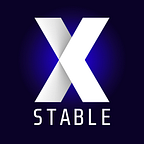We have had a pretty successful launch and an awesome community is being built around the protocol. At XStable, we are very excited with what we have created, and I wanted to give you guys a quick heads up on what can be expected over the next couple of weeks.
Oh, and by the way, in case you missed out on the competition announced by us, check it out here. Rewards of $2000 are up for grabs.
https://gleam.io/competitions/fZ2A9-xst-competition
What to expect in the next 2–3 weeks.
- Liquidity Reserve Panel — In the contracts already deployed, there is a contract named Liquidity Reserve that gets 0.5% of every sell. This can be converted to liquidity by calling the convertToLiquidity() function by anyone.
How it works is simple –
- The caller needs to have a minimum of 500 XST token balance
- Liquidity reserve needs to have a minimum of 500 XST token balance
- The caller cannot be a contract
The wallet that calls this function and successfully converts to liquidity gets awarded 25 XST as an incentive and to offset the gas expense.
2. Contract Updates — buy pressure
In the initial articles where I have outlined the core mechanics on how the protocol operates, we have discussed in detail how the protocol behaves when buy pressure outpaces the sell pressure and vice versa. In case you missed it, you can read the article here. We have also noted a caveat that currently the sell tax only incentivizes the sellers to hold off until the epoch reset but does nothing to actually increase buy pressure. Real utility is what creates this demand to procure the tokens when they are underpriced. However, while we work towards that goal, the utility of XST is not brought out yet in the current versions and is further down the road. So, I have decided to add a subtle speculative buy pressure element until real demand comes in. It works as below –
When sell pressure outpaces the buy pressure, currently the sell tax for burn ramps up. The new element here is that the buyers would get a mint in this scenario. So, the seller loses a chunk of tokens which are currently being burned. The modification would be that not all of these would be burned in the next iteration but some of these would be kept aside as a reward to the buyer until protocol gets back to equilibrium again (sell tax = 1% and buy mint =1%). At the initial stages, the protocol needs to expand and this would mitigate the supply contraction in line with the protocol goals.
The actual mechanics and the math behind will be outlined in a subsequent article closer to this update going live.
3. Dual/Triple yield — We have spoken already regarding XSS and the concept of dual yield. There is going to be a separate article focusing on the mechanics of how XSS is going to operate. But here is a quick overview.
- Deposit XST tokens into the XSS vault and mint XSS. XSS will be an erc20 tradeable token but backed by the value of XST it represents.
- Receive XST rewards from the token dividends on the regular protocol operation
- Receive XST treasury rewards which will be dropped periodically into the vault. These represent the yield that the locked XST would generate further down the road.
- Deposit XSS into partner protocols/farms to generate yield. More on these will be outlined later.
- No XSS pool exists to be able to cash out at the outset except for a redemption to XST. This will be followed up later with an XSS-XST pool. Any buy and sell of XST only increases the holders’ net equity.
Note that XSS is a non-elastic supply token capable of being supported by centralized exchanges right away.
